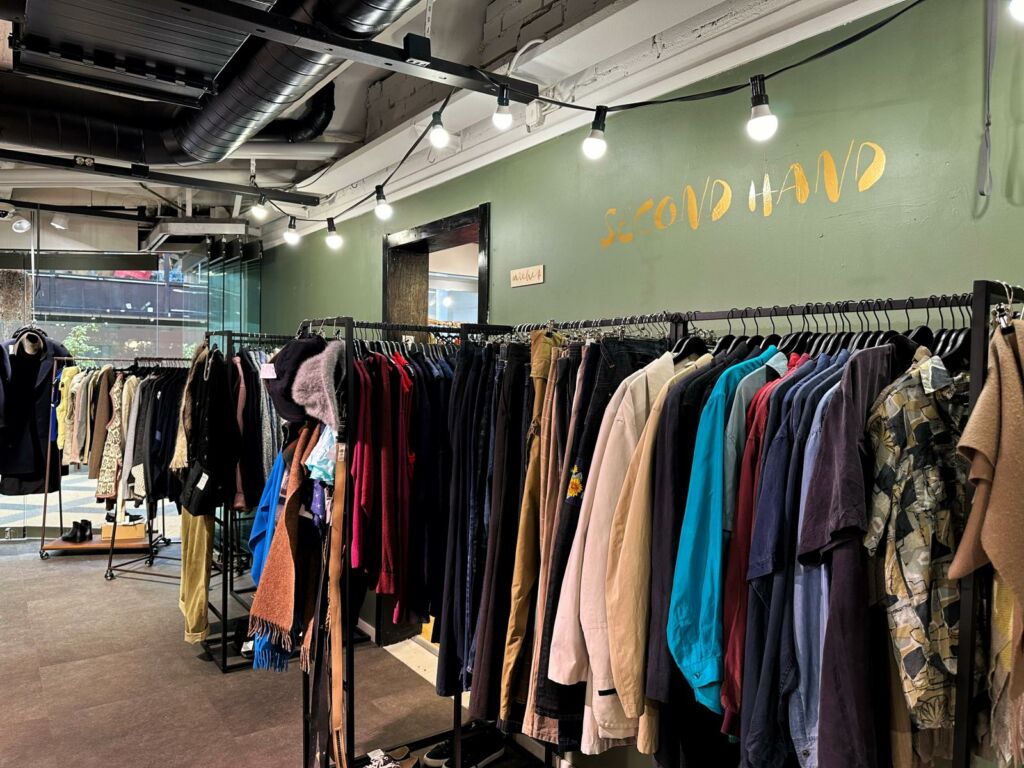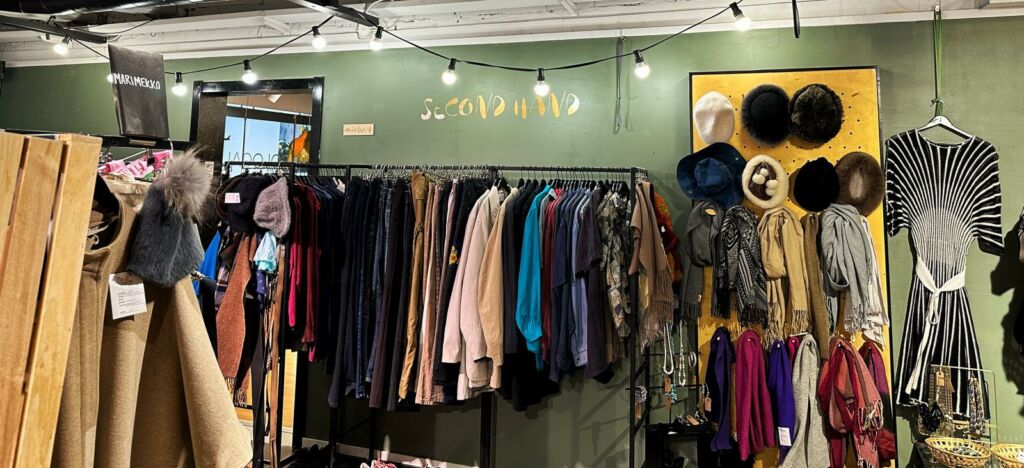Exploring the Second-hand Shop Scene in Turku

![]()

We interviewed five second-hand shops in Turku about their business, there were three different business models involved. Two were private booth shops, two with categorized selling systems and one bigger chain donating center. One private shop was dedicated to children’s clothes.
Growing interest in second-hand
We asked the second-hand stores about the latest changes in the second-hand industry. The main change is that prices have risen, and sellers have rated their clothing more expensive than before. Additionally, there are new competitors in the market and a growth in demand for second-hand clothing. Relatedly, attitudes have been shifting and people tend to view used clothing in a more positive way than before. In fact, there are signs that second-hand customers are replacing buying new items by going second-hand, as people are seeking more specific items, or even gifts.
Quality issues and other challenges
Despite all the positive changes, challenges remain. There were mentions of item quality issues, as donated or sold items have been occasionally dirty or broken. Stealing, low visibility in the market and existing prejudices persist, and the business is still heavily seasonal.
There is a big quantity of clothes getting donated. Some clothes are not sellable and has to be put straight to recycling, which is a challenge to second-hand stores for the sorting of clothes takes a lot of recourses. The unsold clothes are put to recycling, international assistance, material collection or donated to other second-hand stores. When donating clothes from one second-hand store to another, it is usually from private booth stores to donating centers. The second-hand stores were interested in sustainability, and took part in a circular economy by recycling, charity and resell activities.
Collaboration between second-hand operators
The second-hand business is highly seasonal. Weekends and summertime tend to be busier as winters and big holidays appear slower. Changes of season activate customers, similarly to traditional clothing market. To acquire customers in the beginning of their operations, second-hand shops utilized social media, word-of-mouth recommendations in addition to radio and other paid marketing methods, discount campaigns and flyers. Different social media platforms, such as Instagram and Facebook, were proven to be most effective in driving sales. In fact, there were mentions of collaborating with influencers to market the business. Other marketing channels included using radio or the flea market platform Kirpparikalle to spread marketing material.
In the future, second-hand stores are expecting to see more competition and even more demand. Customers could be seeking different products and from whole new product categories, traditionally bought as new. As we have already seen, online stores are supporting brick-and-mortar ones and second-hand industry is anticipating more collaboration between operators.
Changes in the market
When similar interviews were conducted a year ago, some concerns, that rose from the entrepreneurs were about the oversupply of second-hand stores. It was a concern that there would not be enough customers for all the stores. At this point it seems the concerns were luckily unnecessary. The market for second-hand clothes has increased so much that there seems to be enough customers.
In addition the business is still the same as last year, seasonal but growing. The businesses are looking into new opportunities while keeping their fundamental values of sustainability and keeping the clothes circulating from one consumer to another.
In summary, Turku’s second-hand shops showcase a thriving trend towards sustainable shopping and budget-friendly finds. Despite existing challenges in the industry, these stores are optimistic about their prospects. They look forward to further growth and collaboration, continuing to play a vital role in promoting conscious consumption and contributing to a more sustainable future.
Innovation project students
Turku UAS
These materials were created in the Baltic2Hand project which is an Interreg Central Baltic Programme 2021–2027 project that is co-funded by the European Union. Read more about the Baltic2Hand project.
